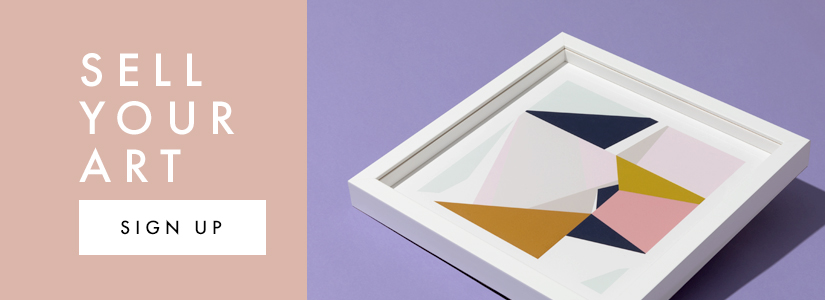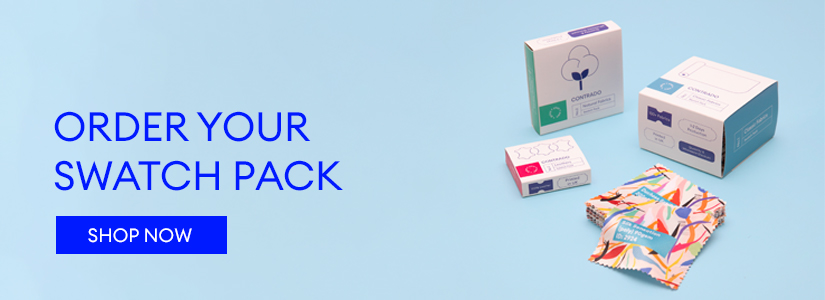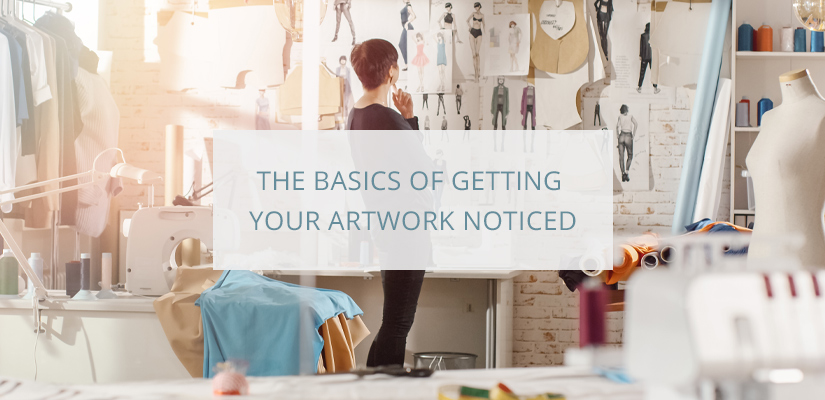So, you’re an artist. You have a selection of outstanding work, and you’ve taken the time to design some awesome products with Contrado. Everyone that sees your offering is in awe, yet still, nobody seems to be finding it. So, how do you break the ‘starving artist’ cliché and answer the ‘how to get my art noticed’ dilemma? I’ve got one word for you…
Marketing
Yes, that’s right, marketing. In a perfect world, the fact that your work is spectacular would be enough, but unfortunately, that’s not the case. If you studied art, textiles or design, you might not know much marketing your art. That’s entirely fair. I am a natural wordsmith, but it doesn’t stop everything I draw looking like a squashed teapot. So, for those of you who are asking “how do I get my artwork noticed?”, I am here to give you the basics.
The future is now
To get your artwork noticed, you need to be able to please not only the consumer, but the robots too. Those are the powers-that-be that are the internet, and search engines need to be able to find your products to be able to offer them up. There are a few basics that you can incorporate into your store to make it easily readable by, and visible to, both. This is called search engine optimisation, or SEO for short, and it optimises your content.

What is SEO and how does it work?
If you want to get your artwork noticed, there are some things that you can do to help it perform better. Over three-quarters of people will not look past the first page of search engine results. Most of those will select one of the top few options. So you want to get your site as high up the first page as possible. Search engine robots ‘crawl’ your pages. They look for specific things in order to work out how relevant your page is to the search in question. By optimising your content, you can send those crawling robots signals that scream “Pick me! Pick me!”.
Choose your title wisely
What exactly are you selling? Your store might be full of magical names, such as “Resonant Lullaby”. It perfectly describes your art, but it doesn’t actually describe the product. Although customers will see on your site that it’s, say, a skirt, from the images, the robots won’t. Be as descriptive as you can, but don’t make it too long. Aim for around 30-50 characters for your product title and you should be golden. Make sure that every title is different, but that they are consistent.
A good way to ensure this is to follow a set structure, a good formula is Name > Description > Product. For example, Resonant Lullaby > Frilled Wrap > Skirt. That’s around 35 characters. And it has the unique name that you’ve given that specific piece, as well as describing what it is. It gives enough detail that people who are looking for a pencil skirt won’t come to your site and be disappointed. But those who are looking for a wrap skirt can be shown your offering in their search results.
How to get my art noticed with the title: Choose 30-50 characters to write a descriptive title that tells the customer exactly what you’re selling.
Sell it in a sentence
When search engines show your product, they display what we call metadata. Put simply, metadata is data that describes what is on the page that it leads to. This is displayed in the search results to give the searcher information about what is on your page. The meta title can be slightly longer than your product title. Use up to 50-60 characters or so. It is shown in blue above your website link. Your meta description wants to be about 150 characters. This is the couple of lines of text that shows under the website link in the search results. You need to use this small amount of space to really sell your item. This is your opportunity to make those potential customers pick your site over all others.
How to get my art noticed with metadata: Choose a 50-60 character title and a 150-character description to sell your product well enough to make searchers want to click through to your site.

Keywords
Yep, the dreaded keywords, it was bound to come up somewhere. As the name suggests though, these words are literally the key to getting your artwork noticed. A keyword is a word or phrase which explains the product (or subject) that your page is about. In our skirt example, potential keywords would include: ‘wrap skirt’, ‘frilled skirt’, ‘frilled wrap skirt’ and at a push ‘skirt’.
Keyword Types
There are a couple of different types of keywords, the main ones are short-tailed and long-tailed. These pretty much do what they say on the tin. If you imagine the start of your keyword as a puppy, a short-tailed keyword is like the French Bulldog of keywords, often only one or two words long, whereas long-tailed keywords are the Labradors of keywords, usually a phrase more than an actual word.
Try to think of the keywords as an arc, a banana on a graph, the short-tailed ones are high in popularity, but very common – for example ‘skirt’. They will have a high search volume (number of people who use that term when they are searching), making it likely to come up more often, however they also have a large amount of competition (other sites which also use that keyword), so you might not be offered as one of the first sites, and you might not be chosen by the customer.
The long-tailed keywords are much less common, for example, “frilled wrap skirt”, so they have a much lower search volume. However, someone searching for that, knows what they want, exactly what they want, and that’s what you’re offering, so it’s much more likely that you will be presented to them and, proving your metadata is strong enough, they’ll (hopefully) click through to find their perfect skirt. A combination of both is good, but the longer-tailed keywords are a fantastic tool to use to your advantage.
How to get my art noticed with keyword types: Choose 1-3 words or phrases or varying lengths that detail exactly what you’re selling.
Choosing Keywords
Choosing which keywords you want to use can be tricky and, to be totally honest, it’s not an exact science. There are multiple formulas and factors that you can take into account to work out what these are but, put simply, you want your keywords to be the things that people are likely to type into that search bar.
As someone without a plethora of tools and research analytics to use, there are a few ways that you can choose how to best pick your keywords. Put yourself in the customer’s shoes: last time you bought a skirt online, what did you search for? This is always a good way to start because you want to get your artwork noticed by people like you. Ask around, whether it be sending a couple of messages in a group chat or asking your shopaholic friend, they can give you insight as to how other people might think. You don’t need many keywords, one to three is a good rule of thumb.
How to get my art noticed with keyword choices: Make sure that you use the best keywords for your products. Consider what you and your friends might search for if you were the buyer.
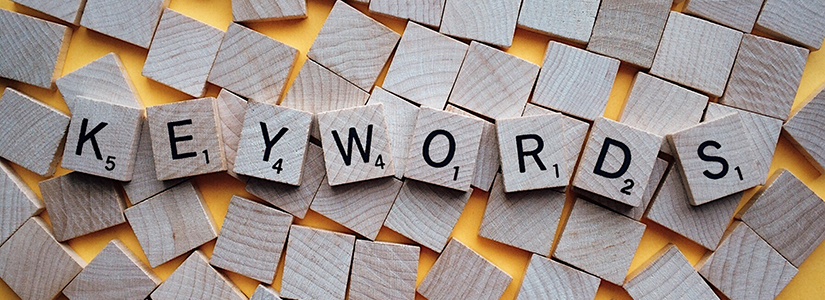
Keyword Implementation
Mastering the art of keyword implementation can be tricky business. Gone are the days when the process was to just cram it in there as much as you can, which very much used to be the way it worked.
I can remember the days of looking for something popular on eBay, like, for example, an iPod, and getting results for absolutely everything under the sun. All with wonderfully intricate titles such as “Coffee machine filters. Not iPod, TV, MP3 Player”, and that used to work. Another old trick was when you searched for something and the pages it took you to just had a paragraph at the bottom of it, with a bunch of different keywords all strung together. It didn’t matter what you searched for, one of these results would come up.
But, as technology progresses, so does search engine optimisation. The crawling robots can now work out if your keywords are relevant to your page or not and will ignore your website completely if it thinks that they aren’t. This means that as a searcher, you are offered much more relevant results. However, it also means that as a copywriter, knowing what to do to make sure that you get it right can be tricky.
You should arrange these in order of importance, giving you a primary keyword, a secondary keyword and then a third, alternative keyword. This order will become important when it comes to working out how often to use each one.
How to get my art noticed with keyword implementation: Make sure that the keywords you choose are relevant to the page. If they aren’t, then search engines will ignore you.
Keyword Usage
Once you have your keywords, it can be easy to go nuts. It is important that you don’t though. Search engines read your keyword density and rank your page based on that. To calculate keyword density, you work out how many times your keyword appears within your page. If you have 400 words, and you write your keyword in there 20 times, your keyword density is 5%. You should aim for a keyword density of around 1-3%. Any less than this and the search engines will not think your page is relevant to the topic, any more and it will class it as ‘keyword stuffing’, which is something you will be penalised for.
You should aim to use your primary keyword the most, followed by your secondary and then your alternative keyword. So for 400 words, you should be aiming to use your primary keyword maybe 5-10 times. Your secondary would be around 3-6 times and any alternative keyword would feature maybe once or twice. This would give you a good keyword density, showing that your content is on topic, but not stuffing it.
How to get my art noticed with keyword usage: Use your keywords often enough that it’s clear what the page is about, but not so much that you’re penalised for ‘keyword stuffing’.
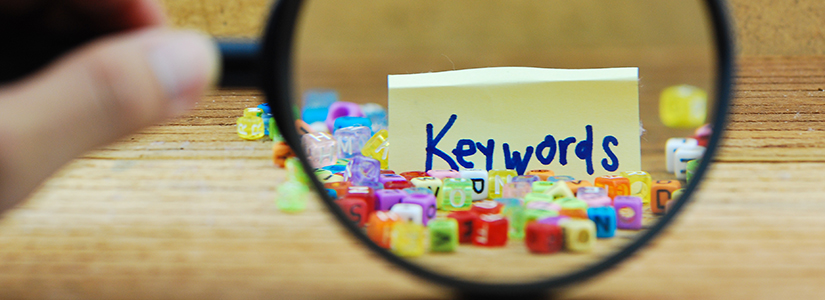
Writing Copy
Now that you know what you’re going to write about, which keywords to add in, and how often, it’s time to actually write the copy. We 100% recommend you adding some copy to your products. If you don’t, then you are unlikely to get your artwork noticed. In order to be picked up by search engines, it’s imperative that you write a detailed description of a decent length.
Getting Creative
If you’re not a natural born writer, that’s okay. Anything is better than nothing, but the more you have (for the most part) the better you’re likely to rank. That being said, too much copy will likely bore your customer – even now, it’s still about that balance between pleasing the people and the robots at the same time.
How to get my art noticed with creative copy: If you have no copy on your page, it simply won’t perform. You have nothing special, and you’re not making a case for why the customer should choose you.
So, how much then?
There are many things to take into account when working out what the ideal copy length is: the age of your audience, whether they will be reading on their phone or a computer and how much they already know about what you’re selling.
As with most of the SEO basics (and the more intermediate stuff too), it isn’t an exact science. As a general rule, the more expensive or complicated something is, the more information people will want. I am going to be a lot more likely to take a risk on a lower cost t-shirt, that I would be on a higher priced wedding dress.
We would advise, as a ballpark figure, somewhere between 400 and 600 words would be sufficient. That gives you plenty of words to use to describe your art, how you made it and what you used, the emotions you were trying to portray, as well as describing the product that you are selling, the options that it comes in, different sizes, shapes, materials and any other details that might bear relevance.
How to get my art noticed with copy length: Write 400-600 words that describe your product. Give details, you are trying to sell it after all.

Stop copying me!
Not that we think you would, but copying is bad. Not only for potential copyright reasons, but also for search engine optimisation. You want to get your artwork noticed, but that’s the thing, it’s yours. Nobody else will be able to explain it the same way you would, and even when it comes to the product itself, or multiple products that are created using the same piece, copy and pasting is a bad idea. It generates what is called ‘duplicate content’. This is literally the same piece of content duplicated across multiple pages, and it’s another thing that search engines will penalise you for – often dismissing you as a potential search result straight off the bat. That goes not just for the entire page but also excerpts.
How to get my art noticed without duplicate copy: Every time you create a new product, write the information from scratch. Don’t copy other people, and don’t copy your other pages – it’s not worth it.
Quick, act natural
This one is important. Use your own voice, be friendly, and address your customers as people, that’s who they are after all. They are your products, in your store, made using your art. So, to get your artwork noticed, you are the best person to describe them. Be conversational if you can and describe what you feel is important. Check out the examples below.
“My oil painting with lots of colour and pattern.”
“An oil painting with deep colour for impact. Lots of spontaneous patterns but also calculated.”
“Resonant Lullaby is an oil painting that I created using vibrant blues and deep purples. The wispy nature of the lines and the darkened colour palette remind me of the night, in an unthreatening way. The sweeping, swirling way in which the colours merge together makes it feel like they go on forever, comforting you.”
By taking a few extra moments and describing in more detail your thought process when you created the piece, in your own, friendly tone of voice, makes everything sound so much more appealing – a sure fire way to get your artwork noticed.
How to get my art noticed with the right tone of voice: Talk to your customer. Imagine you are talking to a friend who wants to know more about your art and the product. Don’t just spit facts all over your page.
